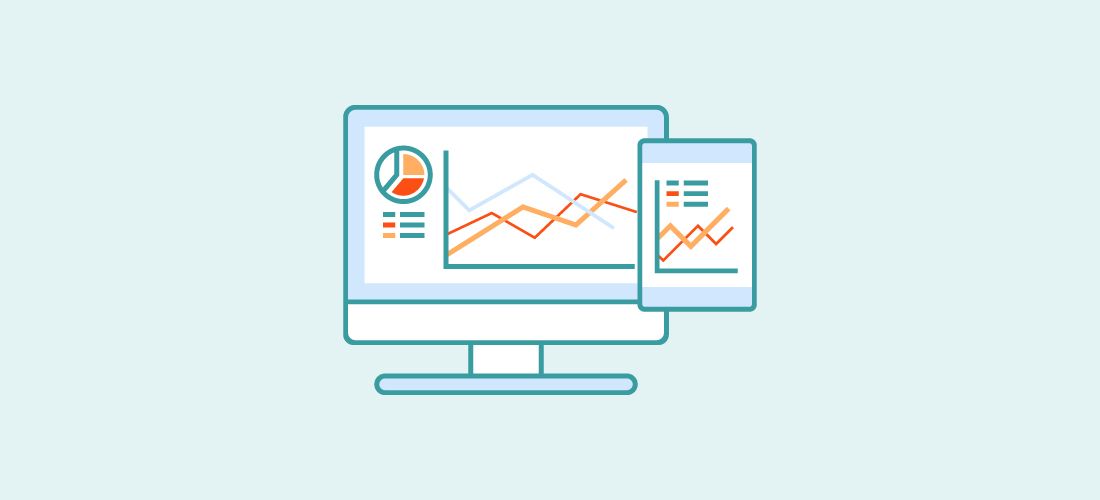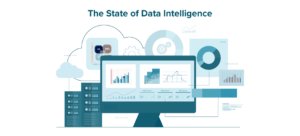
Downtime in any business means loss of productivity, increased costs and loss of revenue. A recent survey found that 91 percent of respondents estimate that one hour of downtime costs as much as $301,000 or more. Of that 91 percent, 44 percent indicated that hourly downtime costs exceed $1 million. As organizations look to mitigate downtime, the evolution of observability is transforming decision-making processes within the realm of data management. It has become crucial for operations, especially as the move towards multi-cloud and microservices has made organizational applications more complicated and dynamic. However, there are challenges to making observability a useful reality for a business, and it can be overwhelming to figure out where to start.
What is observability?
Observability is a measure of how well the internal states of a system can be inferred from external outputs. It originated out of classical control theory around systems.
The difference between observability and monitoring
Observability and monitoring are often used interchangeably but they are distinctly different.
Monitoring looks at if an environment is working as expected, whereas observability allows you to ask why an environment is not working. To clarify further, monitoring is typically failure-centric (i.e. alarms) whereas observability aims to look at the overall behaviour of a system.
Observability combines data from metrics, logs and traces to build a picture of health across the enterprise and to assist in resolving complex computing problems. Monitoring primarily focuses on logs and events.
The combination of metrics, logs and traces allows one to answer nearly any question about a business, at any time, no matter how complex the architecture, solve problems faster with a reduced mean-time-to-resolution (MTTR), and offers the opportunity for more insightful incident reviews.
The challenges of making observability a reality
Complex infrastructure
Traditionally, monitoring systems focused on simple metrics and logs. However, as technology evolved, systems became more intricate, integrated and distributed, which makes it challenging to understand behavior through traditional monitoring methods. As the number of distributed systems, and the applications and databases that resided on them grew, so did the need to better manage, and understand the performance of those systems in the networks that connected them. This led to the emergence of observability as a comprehensive approach to understanding these complex systems.
Sheer amount of data volume
The complexity of systems also contributes to increased data volumes. As systems and applications generate an ever-increasing amount of data, monitoring and analyzing the sheer amount of data can overwhelm observability tools, hindering the ability to provide insights. Increased latency, reduced responsiveness and more storage requirements can be obstacles to effective observability. Scalability is key to make sure that relevant signals are not lost amid the noise of extensive data flows.
Data silos
Observability relies on a comprehensive understanding of an entire system, and data silos create a fragmented view of information. The inability to correlate data from different sources hampers the identification of root causes and trends, limiting the effectiveness of observability tools. Breaking down data silos is crucial to enable organizations to glean meaningful insights from their data and enhance observability.
Metrics
Aligning observability practices with business goals is crucial. It is not just about monitoring databases; it is about how those insights translate into tangible benefits for the entire organization. Collect as much data as you can but priority should be given to high cardinality data because it contains unique, specific values, which allows for more rapid debugging and investigation to get to the “where” and “why” of a problem.
Cost
The more observable a system is, the more expensive it is to manage and monitor. Observability requires the need to collect large volumes of monitoring data at a finer granularity than before. Ample storage, data processing capabilities and real-time monitoring can contribute to escalating costs. Striking the right balance between observability and cost must be considered to ensure monitoring initiatives align with budget constraints.
The cloud question
For organizations using the cloud there could be further challenges when it comes to observability as some vendors may not offer as many options for instrumentation. It’s vital to consider any changes in levels of collection when moving to the cloud.
Context is required before implementing a solution
Tools are of little use until they are implemented in the context of a project, practice or objective. Too often, organizations purchase monitoring solutions and expect them to magically install and solve structural issues. The truth is, most solutions collect similar data and expose consistent metrics. Many vendors offer their own unique approach to solving this issue. Only a select few can quickly provide operators with diagnostic data to shorten MTTR.
Though there are challenges involved in bringing observability to organizations, this shift has brought about a new era where the focus is not just on managing databases but on driving tangible business value. The adoption of observability practices has led to a visible and measurable impact on organizations, resulting in improved service-level management, minimized disruptions to business continuity, and overall operational efficiency.
Benefits of observability
The state of observability today means a transition from merely managing databases to actively understanding and optimizing the entire data infrastructure. By utilizing observability tools and practices, IT teams gain the ability to:
Proactively Identify Issues: Observability allows IT teams to detect potential problems before they escalate. It enables the prediction and prevention of system failures by analyzing patterns and trends in the data. Beyond that, comprehensive observability solutions have shown substantial economic impact in IT organizations. The reported value of observability was valued at over $500,000 by 53 percent of respondents, at least $1 million by 41 percent of respondents, and only 11 percent received a value of less than $100,000. Respondents who indicated over 5 observability capabilities deployed were 82 percent more likely to say they receive over $1 million or more in value.
Improve Mean Time to Resolution (MTTR): Quick identification and resolution of issues are crucial in minimizing downtime. Observability tools contribute to reducing MTTR, ensuring faster issue resolution and reducing operational costs associated with system downtime. About 65 percent of recent survey respondents who adopted observability found that their MTTR had improved to some extent, including 31 percent who said it improved by 25 percent or more.
Optimize System Performance: With observability, teams can gain insights into system performance, identify bottlenecks, and optimize the overall performance of databases and associated systems.
Enhance Overall Reliability: By understanding the behavior of complex systems, teams can ensure better system reliability, which is crucial for businesses relying on uninterrupted data services.
Steps to move forward with observability
The state of observability today signifies a change in thinking from reactive to proactive management of systems. It empowers teams to not just react to issues but to anticipate and prevent them, improving the overall performance and reliability of the data infrastructure.
But how can organizations get on the right track to move towards effective observability?
Align with the right organizational outcomes
Start by identifying the organizational outcomes that observability can help impact. It is about leveraging the insights gained from observability tools and practices to achieve targeted business goals. For IT professionals, channeling towards the right outcomes involves using observability data to directly impact business success.
Make efforts to optimize current performance
Analyzing historical data trends helps teams identify inefficiencies and bottlenecks within current systems. By recognizing patterns in resource usage, query performance, or system response times, they can optimize system configurations and address potential issues that could hinder overall performance. For instance, a 30% reduction in IT-related costs due to observability solutions directly impacts the bottom line, contributing to the company’s profitability.
Proactively identify potential issue areas
There are potential issue areas in every organization. One way IT pros can get ahead of these issues is to use time series analysis to detect anomalies or unusual patterns in system behavior. Sudden spikes, deviations, or irregularities in data might indicate potential issues that can be addressed before they develop into significant problems. This proactive approach helps in mitigating issues before they impact system performance or lead to failures.
Standardize data collection
Consider a standardized approach to collecting observability data from various parts of a system, regardless of the technology or framework in use. This standardized collection method ensures consistency in the data gathered from various components, making it easier for teams to manage and interpret the vast amounts of data generated by different systems.
Find AI and ML opportunities
The future of observability lies in the integration of Artificial Intelligence for IT Operations. Combining artificial intelligence (AI) and machine learning (ML) with observability practices holds significant promises for IT teams to manage and monitor complex IT environments.
Finding automation opportunities will streamline routine tasks, such as system monitoring, performance analysis, and problem resolution, allowing teams to focus on more strategic tasks rather than repetitive operational activities. Additionally predictive capabilities will assist in reducing downtime and system outages, improving system reliability and performance.
Forecast and plan for future capacity
Time series analysis aids in estimating resource requirements based on past data patterns. Teams can forecast future demands for storage, processing power, or network bandwidth, allowing them to proactively allocate resources and plan for scalability to meet growing needs without compromising system performance.
Make moves towards continuous improvement
By continuously refining observability practices, teams can drive continuous improvement. They can adapt, optimize, and fine-tune systems based on the insights gained, ensuring that the business remains competitive and responsive to changing demands.
Conclusion
From predicting and preventing system failures to optimizing performance and improving resource allocation, observability empowers IT professionals to make informed decisions, enhance system reliability, and drive continuous improvement. This shift is not solely about managing databases but leveraging insights from observability practices to align with specific business outcomes.
By leveraging the insights gained from observability practices, it plays a critical role in shaping outcomes, reducing costs, ensuring systems operate at peak performance and contributing to the overall success of a business.



